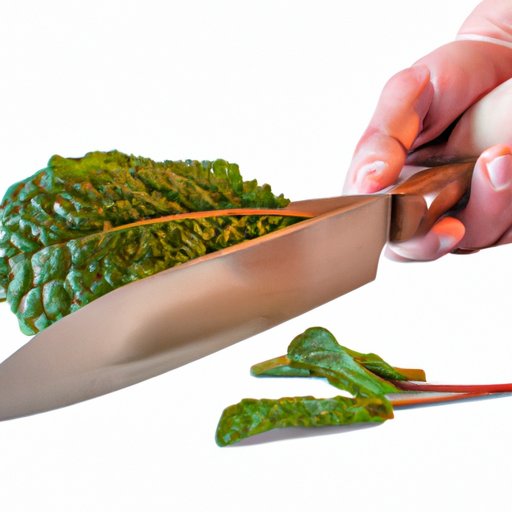
Introduction
Iron is an essential mineral that plays a crucial role in various bodily functions, including oxygen transport and energy metabolism. Unfortunately, iron deficiency is a common problem that affects millions of people worldwide, leading to anemia and other health complications.
The good news is that there are plenty of ways to increase your iron intake and maintain healthy iron levels. In this article, we’ll provide tips and information for getting more iron in your diet through food choices and healthy habits.
Iron-Rich Foods: A Comprehensive Guide to Boost Your Iron Intake
One of the best ways to increase your iron intake is by eating foods that are rich in this essential mineral. Here are some of the top sources of iron:
- Red meat, such as beef and lamb
- Poultry and eggs
- Seafood, including oysters, clams, and shrimp
- Leafy greens, such as spinach and kale
- Beans and lentils
- Tofu and tempeh
- Nuts and seeds, including pumpkin and sesame
- Iron-fortified cereals, bread, and pasta
While animal-based foods are some of the best sources of iron, there are also plenty of plant-based options for vegetarians, vegans, and those who prefer a more plant-based diet.
To incorporate more iron-rich foods into your meals and snacks, try adding spinach to smoothies, eating a hard-boiled egg as a snack, or pairing beans with vitamin C-rich fruits like oranges.
Five Delicious Recipes to Increase Your Iron Intake
If you’re looking for delicious and easy ways to get more iron in your diet, try these five tasty recipes:
- Spinach and Feta Stuffed Chicken Breast – This savory dish features chicken breasts stuffed with spinach and feta cheese, and packs a whopping 7 milligrams of iron per serving.
- Black Bean and Sweet Potato Chili – This hearty and flavorful chili is loaded with iron-rich black beans and sweet potatoes, and provides 6 milligrams of iron per serving.
- Quinoa and Lentil Salad with Roasted Vegetables – This delicious salad is packed with protein, fiber, and iron from quinoa, lentils, and roasted vegetables. It contains 5 milligrams of iron per serving.
- Beef and Broccoli Stir-Fry – This savory and satisfying stir-fry is made with iron-rich beef and vitamin C-rich broccoli, providing 4 milligrams of iron per serving.
- Oatmeal with Almonds and Raisins – This simple and wholesome breakfast is a great way to start your day with iron-rich oats, almonds, and raisins. It contains 3 milligrams of iron per serving.
Remember that these recipes should be a part of a balanced diet that also includes a variety of other iron-rich foods.
Plant-Based Sources of Iron to Include in Your Diet
Plant-based sources of iron can be especially important for vegetarians, vegans, and those who prefer to limit or avoid animal products. Here are some of the top plant-based sources of iron:
- Lentils and beans, such as chickpeas, kidney beans, and black beans
- Tofu and tempeh
- Quinoa and amaranth
- Leafy greens, such as spinach and kale
- Nuts and seeds, including pumpkin and sesame seeds
- Iron-fortified cereals, bread, and pasta
To add more plant-based sources of iron to your diet, try making lentil soup, cooking stir-fry with tofu, or blending pumpkin seeds into your smoothies.
Healthy Habits for Improving Iron Absorption
In addition to eating iron-rich foods, there are also several healthy habits you can adopt to improve the absorption of iron in your body. Here are some tips:
- Avoid drinking coffee or tea with iron-rich meals, as these beverages can interfere with iron absorption.
- Choose calcium sources like yogurt or cheese that don’t interfere with iron absorption, rather than calcium supplements
- Cook with a cast-iron skillet to increase the amount of iron in your food
- Include vitamin C-rich foods, such as citrus fruits or red bell peppers, in your meals to help with iron absorption
The Importance of Iron & Why You Should Increase Your Intake
Iron is an essential mineral for overall health and wellbeing. It plays a crucial role in transporting oxygen throughout the body, maintaining energy levels, and supporting immune function.
Iron deficiency can lead to anemia and other health problems, including fatigue, weakness, and difficulty concentrating.
Therefore, it’s important to make iron-rich foods a regular part of your diet and adopt healthy habits that improve iron absorption. By doing so, you can maintain optimal iron levels and support your overall health and wellbeing.
Conclusion
In conclusion, getting enough iron in your diet is crucial for maintaining your health and wellbeing. By incorporating a variety of iron-rich foods into your meals and snacks, trying out new recipes, and adopting healthy habits that improve iron absorption, you can increase your iron intake and avoid the negative consequences of iron deficiency.
So, whether you’re a meat-eater, vegetarian, or somewhere in between, there are plenty of delicious and nutritious ways to boost your iron levels and feel your best.
Try out some of the recipes mentioned in this article, experiment with new iron-rich foods, and make a conscious effort to prioritize healthy habits that support optimal iron absorption.
As the famous saying goes, “you are what you eat” – so make sure that you’re giving your body the nutrients it needs to thrive.





